
33 minute read
INFRASTRUCTURE
from Marine Log May 2021
by Marine Log
NGL Marine has signed an agreement for Marine Management System Certifications with ABS - Houston (American Bureau of shipping) to obtain SQE Certifications for the Office and the Fleet. Craig LaGrone VP of NGL Marine and Peter Higginbotham Senior Principal Surveyor have undergone a long-term commitment.
Dennis Bryson, ABS Manager Gulf Coast Area Operations, said: “ABS is pleased to support NGL Marine by providing Subchapter M services as their Third-Party Organization (TPO). ABS views compliance as a collaborative effort between owners, operators, TPO’s and regulators. As NGL Marine’s Subchapter M TPO, ABS will utilize its experience to provide valued oversight of their SQE Safety Management System and Internal Survey Program.”
Advertisement
NGL Marines’ Health, Safety, Quality, Environment, and Security Department works to ensure the safety and security of its employees, the environment, customers, cargo and terminals. NGL manages continuous compliance and improvement through ISO and International Safety Management (ISM) programs, including the ISM Safety, Quality and Environmental Management (SQE) program, employee training, and
NGL_HalfPage_Apr.indd 1 performance tracking. Key environmental programs cover air pollution and climate change, recycling and conservation of energy.
Realizing the importance of documented procedures and clear policies relating to safety and environmental management, NGL Marine keeps its vessels and offices certified to the requirements of: • The International Safety Management (ISM) Code • The voluntary ISO 9001 Quality Management
Systems and ISO 14001 Environmental Management System standards • The ISM Safety, Quality and Environmental
Management (SQE) program • The American Waterway Operators (AWO) – Responsible Carrier Program • Sub Chapter M Requirements (46 CFR Subchapter M) • SIRE / TMSA (Ship Inspection Report Program) • NGL Marine Vessel Security Plan (VSP) • NGL Marine Vessel Response Plan (VRP) & NGL
Marine Non-Tank Vessel Response Plan (NTVRP) • IMO Resolution MSC.428(98) Maritime Cyber
Risk Management in SMS
The VP of NGL Marine made the decision in 2020 to certify the Office and all vessels to the requirements of the International Safety Management (ISM) Code ISO 9001 Quality Management and ISO 14001 Environmental Management standards. In December of 2020 NGL Marine Office received their DOC that was certified to the ISM Safety, Quality and Environmental Management (SQE) program from American Bureau of Shipping (ABS).
January of 2021 the Evelyn James received SQE a certificate meeting SQE requirements with a SMC SPONSORED CONTENT Certificate from ABS. The H Michael received their ISM certificate in February 2021. NGL Marine will continue certifying the remainder of the fleet. The SQE program combines the now-mandatory ISM Code requirements with the voluntary ISO 9001 Quality Management and ISO 14001 Environmental Management standards.
As an SQE and ISO certified company, NGL Marine has a documented Management System which encourages continuous improvement and is overseen by a Designated Management Representative. One of the major components of NGL Marines’ SQE program is established policies. NGL Marine aims to exceed already stringent environmental standards in an effort to reduce or eliminate environmental risks from our operations.
NGL Marine has identified the significant environmental aspects and impacts of NGL Marines’ business through its ISO program. Related objectives and targets are established annually for our vessel operations and office. Performance is tracked against targets and reviewed in our Management Review.

3/19/21 10:07 AM
New Bill Could Send Billions to U.S. Shipyards
With infrastructure spending on the agenda in Washington, D.C., a bipartisan group of legislators has introduced a measure aiming to provide $25 billion to make investments needed to optimize, improve, and rebuild shipyard facilities, electrical infrastructure, environmental systems, and the equipment of public and private U.S. shipyards that support the U.S. Navy fleet.
The Supplying Help to Infrastructure in Ports, Yards, and America’s Repair Docks (SHIPYARD) Act of 2021 would designate $21 billion for the Navy’s four public shipyards in Virginia, Maine, Hawaii, and Washington, $2 billion for major Navy private new construction shipyards, and $2 billion for Navy private repair shipyards.
It has been introduced by U.S. Senators Roger Wicker (R-Miss.), Tim Kaine (D-Va.), Susan Collins (R-Maine), Angus King (I-Maine), and Jeanne Shaheen (D-N.H.), along with Representatives Rob Wittman (R-Va.) and Mike Gallagher (R-Wis.).
According to Wicker’s office, the legislation would help to address a backlog of modernization, maintenance, and expansion projects the U.S. Navy has identified at public shipyards and provide the Navy flexibility to support capital improvement projects and other investments at yards that are critical to maintaining and growing the fleet.
Projects identified by the Secretary of the Navy would include improvements to shipyard infrastructure, construction of new dry docks, and other items to enable these shipyards to keep pace with Navy needs for decades to come.
What Will Legislation Do?
• Fully fund the Navy’s $21 billion Shipyard Infrastructure Optimization Program at the nation’s four public shipyards in Portsmouth, Va., Kittery, Maine, Pearl Harbor, Hawaii, and Bremerton, Wash; • Invest $2 billion in commercial repair shipyards, subcontractors and suppliers that maintain the U.S. Navy fleet, allowing the Secretary of the Navy to fund key upgrades and infrastructure modernization projects to address current and future maintenance needs; • Invest $2 billion in commercial new construction shipyards, subcontractors and suppliers that build the U.S. Navy fleet, allowing the Secretary of the Navy to fund key upgrades and infrastructure modernization projects to meet current and future Navy capability and capacity needs; and • Provide all funds via the Defense Production Act, removing typical fiscal year constraints on appropriations and increasing flexibility to enable the Secretary of the Navy to accelerate contract awards.
Getting to Zero is GETTING REAL
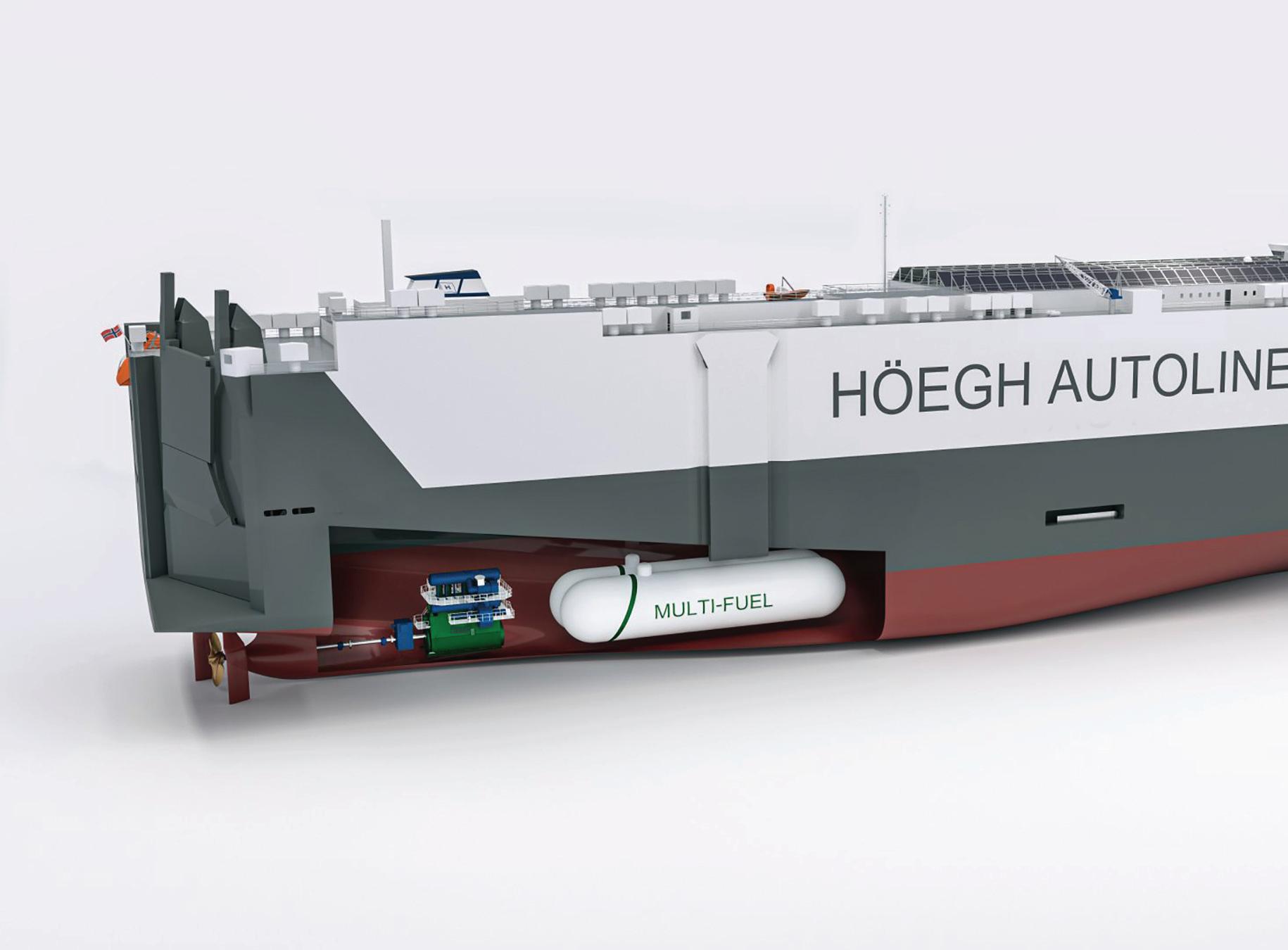
General Motors is to phase gasoline and diesel powered cars by 2035—and California could ban gas-fueled leaf blowers and lawnmowers by 2024. Developments like that are a reminder that moves to make maritime transportation a zero-emissions industry are hardly happening in isolation.
On a small scale, some zero-emissions vessels are already in operation—the two all-electric Maid of the Mist boats giving tourists a close up of in Niagara Falls being an example. Many other vessels are considered zero emissions during part of their operations, including platform supply vessels fitted with battery packs or containerships plugged into shoreside power while in port. But how do we get from these beginnings to an emissions-free world fleet? And when will we get there?
The upcoming meeting of IMO’s Maritime Environmental Protection Committee (MEPC 75) is likely to prove interesting, with the U.S. now joining countries like Denmark in pushing for a complete elimination of GHG emissions from shipping by 2050, and the International Chamber of Shipping looking for market-based measures (a mealy mouthed way of saying some sort of tax on fuel and/or emissions) to finance the massive R&D that will be needed to meet IMO’s goals.
Maritime is clearly on a journey to a greener future and the speed is picking up. And, as this month’s Inside Washington column makes clear, it’s not only deep-sea ships that are affected.
From a power and propulsion point of view, whether you’re talking VLCCs or inland towboats, the fundamental goals remain the same: you want to push the maximum payload possible through the waxter for a given horsepower, which means having an optimized hull form and propulsion plant.
With those thoughts in mind, let’s look at some recent developments that show how far along the journey to zero we are right now.
Ammonia Ready
Car carrier giant Höegh Autoliners, headquartered in Oslo, Norway, last month announced plans to build a series of ammonia-ready car carriers called the Aurora Class that will not only be the most environmentally friendly ever built, but the largest, with a capacity for 9,100 car equivalent units.
The company has entered a Memorandum of Understanding with China’s Xiamen Shipbuilding Industry that, it says, will make it possible to have the first vessel delivered by the end of 2023.
“We are accelerating our decarbonization efforts to meet our net zero emissions target by 2040,” says Höegh Autoliners CEO Andreas Enger. “Together with our customers and trusted partners we will make a significant contribution to a more sustainable maritime industry.”
Appropriately, the Aurora Class is designed to transport the cars of the future. Its strengthened decks and enhanced internal ramp systems, enable electric vehicles to be carried on all decks and provide more flexibility for heavier project cargo.
Multi-Fuel Man B&W Engine
A MAN Energy Solutions multi-fuel engine that can run on various biofuel and conventional fuels, including LNG, will power the Aurora Class. With minor modifications,
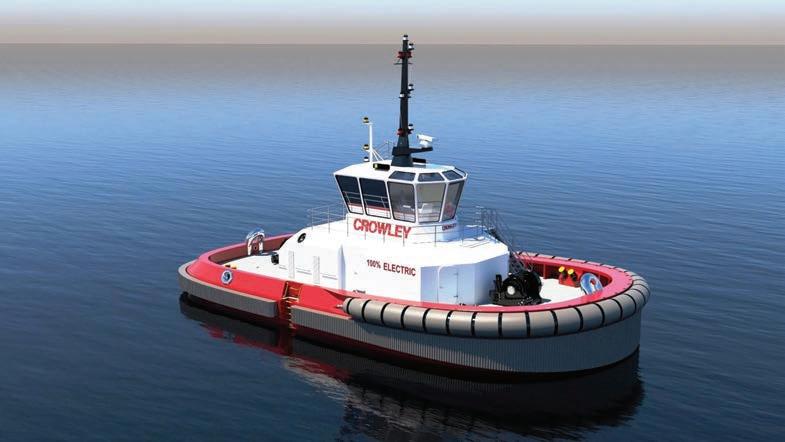

Set to be on the water by end of 2023, Höegh Autoliners’ first Aurora Class car carrier will be ammonia-ready
it can transition to usefuture zero-carbon fuels, including Green Ammonia.
“Reducing emissions is more important than ever,” says Kjeld Aabo, director new technologies at MAN Energy Solutions. “With the selected MAN B&W engine, Höegh Autoliners will be able to operate on various fuel types. After modifications of the engine, tank and auxiliary systems, the engine will be ready to run on virtually any future zero carbon emission fuels: including ammonia. We at MAN Energy Solutions are proud to be the partner on Höegh Autoliners’ path to zero.”
“With the multifuel engine and DNV’s new ammonia ready notation, Höegh Autoliners is bringing the segment and work to decarbonize the maritime industry to a new level,” says Hans Eivind Siewers, segment director passenger ships and Ro/Ro at DNV. “The Aurora design will further meet the enhanced safety standards and reduce environmental footprint significantly.”
Meantime, one of the world’s leading tanker operators, Euronav NV, also has its eyes on ammonia. It has just entered into an agreement with the Hyundai Samho shipyard in South Korea for two VLCC newbuilds plus an option for a third vessel. These ships will be LNG-ready and Euronav says it is working in cooperation with the shipyard and classification society to include an ammonia-ready notation with the potential to reduce CO2 emissions to zero “when technology, logistics and the regulatory framework allows for it.” This, says Euronav, should be defined by the end of the summer.
The vessels will be delivered during fourth quarter 2022 and first quarter 2023, at a price of $186 million for the pair that includes $4.2 million in additions and upgrades to the standard specifications. Euronav also has the option to contract a third VLCC with the same specifications that would be delivered in the second quarter of 2023.
Ammonia Soon, But For Now LNG
Both the Höegh and Euronav orders underscore that while ammonia-fueling is a possibility that is getting nearer, it is not here yet. And while the technology may be close, production and distribution of green ammonia may well arrive a lot later. Meantime, the consensus seems to be that LNG remains the cleanest fuel currently available for large ships.
How Electric is the Future?
Two 67-meter (219.8-feet) Ro/Ro freight ferries on order for Norwegian grocery distributor ASKO at Cochin Shipyard in India have gotten a lot of attention because eventually it is planned that they will operate autonomously. They also illustrate, however, what is currently possible with fully electric battery propulsion, at least on fairly short routes.
Designed for transporting trailers across Oslo Fjord between two of ASKO’s distribution centers, each will have the ability to transport 16 fully loaded standard EU trailers at a time. The operating speed will be 10 knots and it is anticipated that this mode of trailer transport will replace over 2 million road miles per year of truck traffic, in turn saving around 5,000 tonnes of CO2 every year.
The main propulsion system of each vessel consists of one medium-sized Schottel EcoPeller type SRE 210 (500 kW) driven by an electric motor. This motor will be electrically powered by a battery bank of 1,846 kilowatt-hours capacity.
With its special hydrodynamically optimized design, the SRE generates maximum steering forces, enabling top performance in terms of overall efficiency and course stability.
An electrically powered Schottel PumpJet type SPJ 57 (200 kW) will be fitted at the bow of each vessel to act both as thruster and take-home system. The extremely compact SPJ will improve maneuverability many times over.
Crowley Maritime’s electric harbor tugs have no stack—with no emissions, it doesn’t need one. Harbor Tugs
With ports looking to reduce their carbon footprints across their operations, harbor tugs are an obvious target for electric operation.
Crowley Engineering Services has completed the design of the first fully electric U.S. tugboat with autonomous technology. The Crowley design, developed with the expertise of recently integrated subsidiary Jensen Maritime, leverages a large battery system and power saving technology to operate in a fully electric mode while producing zero air
emissions or greenhouse gases.
The 82-foot tug will provide 70 short tons of bollard pull, using an azimuthing drive propulsion system with two 1,800 kW motors and a 6 MWh battery.
The design also supports fully customizable features and can be adjusted for alternate power capacities suitable for a standard hybrid framework if desired. The fully modular batteries allow for upgrades as technology changes. In addition, Crowley has developed an onshore charging station to fully support charging and reliable performance at the home port.
“Crowley’s design provides operators the tugboat solution to continue serving ships quickly and powerfully, while reducing their environmental impact by eliminating a carbon footprint,” said Ray Martus, vice president, Crowley Engineering Services. “This new design sets the standard for innovation by showing that sustainability and power can work together seamlessly in our maritime industries.”
With no exhaust stack, the tug has 360 degrees of visibility from the pilot’s station, allowing the operator to see without obstruction.
The tug has also been designed for future autonomous operation to increase the safety and efficiency of the operation including integrated automation and control systems. The intelligent maneuvering and control system offers more efficient vessel operations and allows masters to focus on the overall control and positioning of the vessel in increasingly busy harbors.
World’s First Diesel/ Battery Push Boats
A new fleet of innovative diesel/battery electric pushboats for Hidrovias do Brasil S.A. is under construction in Belov Engenharia Shipyard, in Salvador, Brazil, to a design from Robert Allan Ltd. of Vancouver, B.C., Canada. The vessels will provide terminal assistance on the Amazon River system, with delivery of the first vessel in 2022.
These pushboats are expected to be the world’s first battery electric shallow draft pushboats when they begin operating in the Amazon River system.
Built to the RApide 2000-E design, the pushboats are fitted with a DC grid diesel-battery electric propulsion system, two diesel generators, two L-Drives and a large battery bank (600 kWh initial installation, with capability to scale up to 1800 kWh). The pushboat is equipped with two L-Drive units, each with an input power of 350 kW. The propulsion system is diesel-electric to improve efficiency when operating in lower power modes. The vessel is certified as an inland navigating vessel by DNV.
Beyond Hybrid
When plugging into shoreside power isn’t an option, how do you power an electric vessel without putting a diesel in the picture? The answer is a fuel cell, which, at its simplest, can be understood as pretty much a way of turning fuel into electricity, with hydrogen, methanol and ammonia being the fuels usually being considered.
In the Netherlands, Rotterdam-headquartered Future Proof Shipping B.V. is currently retrofitting a 361- by 37.6-foot (110- by 11.45-meter) inland container vessel to use a fuel sail 100% on hydrogen power by December of this year.
Holland Shipyards is removing the vessel’s main engine and gearbox, and installing a new modular propulsion system. This will consist of electric motors, hydrogen tanks, a PEM fuel cell system (necessary for converting hydrogen into electricity) and a battery system. The compressed hydrogen tanks, the fuel cells and the battery system are separate







One Magazine, The Entire Market
Your lens into the Maritime World
MARINE LOG offers coverage of the entire maritime market. From blue to brown water, domestic to international news, vessel design, operation and construction in the commercial, naval and government sectors, Marine Log offers whole market coverage in one magazine.
SUBSCRIBE NOW: http://bit.ly/mlsubscribe
units that can be removed for maintenance or replacement purposes.
The hydrogen and fuel cell system will be installed in the cargo space of the vessel, with the hydrogen being placed above the fuel cell system in two 40-foot containers.
The fuel cell system will be triple redundant with 825 kW capacity (to supply propulsion and auxiliary power) and a 504 kWh lithium-ion battery pack for peak shaving, secondary and bridging power. The system will contain a 750V DC bus bar and an e-motor for propulsion.
Could fuel cells soon be in the future for America’s inland waterways, too? Recently, New Orleans headquartered Maritime Partners LLC entered a joint venture with Irish chemical and product tanker specialist Ardmore Shipping Corporation and Bend, Ore.-based Element 1 Corp. The JV, called E1 Marine, aims to bring fuel cells using advanced methanol-to-hydrogen technology to the marine sector—including the inland waterways market.
“We are pleased to partner with E1 and Ardmore to drive the adoption of E1’s hydrogen purification technology across the global maritime landscape,” said Bick Brooks, cofounder and CEO of Maritime Partners LLC.
YOUR PROPULSION EXPERTS YOUR PROPULSION EXPERTS
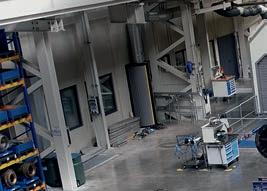
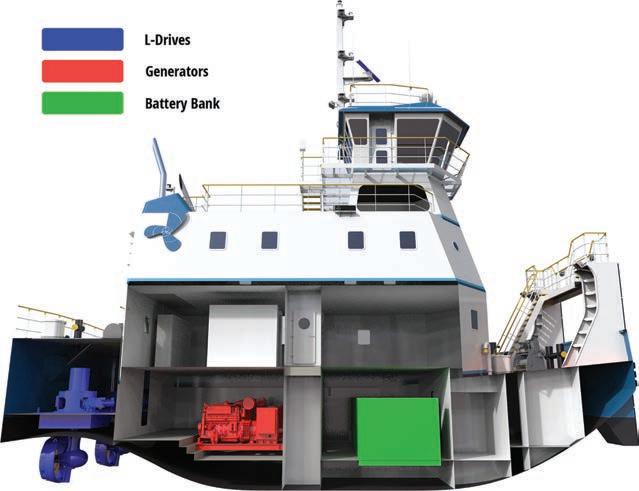
What’s inside world’s first battery electric shallow draft pushboats?
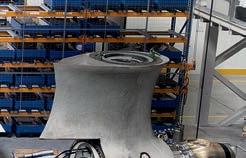


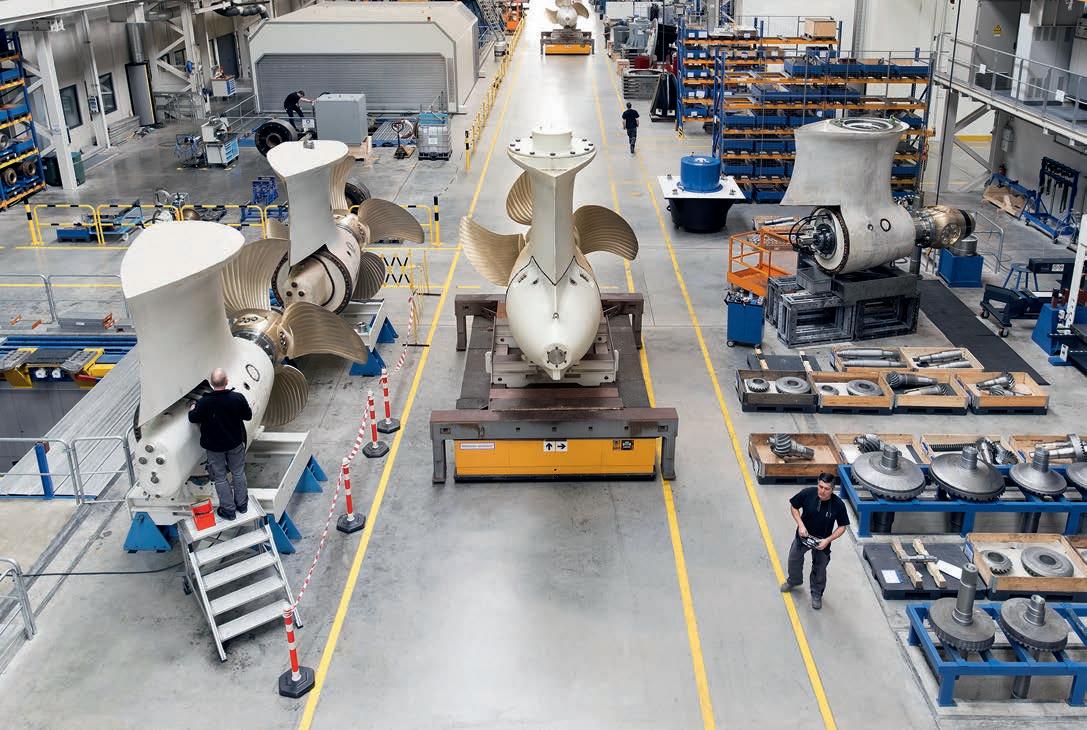
GERMAN QUALITY ENGINEERING TRUSTED SINCE 1921 GERMAN QUALITY ENGINEERING TRUSTED SINCE 1921
In our sustainable manufacturing facilities we produce state-of-the-art propulsion solutions for vessels of all In our sustainable manufacturing facilities we produce state-of-the-art propulsion solutions for vessels of all sizes and types. Founded in 1921, the SCHOTTEL Group is an independent family-owned business which is today sizes and types. Founded in 1921, the SCHOTTEL Group is an independent family-owned business which is today one of the world’s leading manufacturers of high-quality steerable propulsion systems. one of the world’s leading manufacturers of high-quality steerable propulsion systems. Around 100 sales and Around 100 sales and service locations worldwide ensure customer proximity. service locations worldwide ensure customer proximity. Your local contact: info.sales@schottel.com Your local contact: info.sales@schottel.com www.schottel.com www.schottel.com

CYBERCRIME

on the Seas

By Maura Keller
The maritime industry is constantly evolving. With the advent of new technologies and a greater focus on operational efficiency, cybersecurity has stepped out of the background and the IT back offices to the forefront of the industry. Maritime cybersecurity incidents can cost multi-millions of dollars in losses to a shipping company, stevedores and financial institutions. In addition, the hacking or distortion of manifests can reflect fraudulent cargo entering a port, such as narcotics and weapons of mass destruction.
According to Ford Wogan, a partner in the Maritime Practice Group at Jones Walker LLP, in the early 2000s, cybersecurity was barely a blip on the proverbial radar within the maritime arena. In the United States, the Maritime Transportation and Security Act of 2002 (MTSA) was overwhelmingly passed by the House and Senate.
“Enacted in the wake of the September 11, 2001, attacks, the MTSA focused on shoring up port and waterway security efforts to deter, prevent and response to a physical terrorist threat. In fact, the word ‘cyber’ does not appear anywhere in the MTSA,” Wogan says.
More recently though, as technology has advanced, physical threats to the industry have given way to cyber threats, which have often been undertaken by governmental actors, Wogan says. As a result, cybersecurity concerns—and their effect on the industry’s financials—have become more prominent.
Wogan points to the 2017 NotPetya cybersecurity attack on Maersk Lines resulting in nearly $300 million in losses to the company. “Similar cybersecurity attacks to ports around the world—including in Barcelona and San Diego—crippled not just port operations but other aspects of the global supply chain, illustrating the inherent connectiveness of the industry and the trickle-down effect a cybersecurity event can have beyond just the party targeted,” Wogan says.
Industry stakeholders along with governmental and regulatory agencies have responded to these emerging threats proactively. The United States Coast Guard (USCG) has issued circulars outlining guidelines for addressing cybersecurity risks at MTSA-regulated facilities and, as recently as February, issued a Vessel Cyber Risk Management Work Instruction to provide guidance on USCG’s approach for assessing cyber risks as part of its commercial vessel compliance program. And according to Wogan, BIMCO, IMO and other industry leaders have also provided their own guidelines and recommendations for implementing cybersecurity policies and procedures aboard vessels.
“We’ve seen a number of ransomware attacks at ports over the years most recently, the Port of Kennewick,” says Joelle Dvir, associate in McDonald Hopkins’ national data privacy and cybersecurity group. In November 2020, the Port of Kennewick outside of Seattle was hit with ransomware and faced a $200,000 ransom demand. The port was forced to rebuild from backups after deciding not to pay the ransom.
As Dvir explains, ransomware attacks can be introduced into the port environment in a variety of ways — via phishing email, unsecured remote desktop protocol (RDP), and even by physical methods, like plugging a corrupted device into the port environment.
“A culture of privacy from every angle is crucial in protecting the ports,” Dvir says. “Every person that interacts with the ports must be cyber-aware and know what to do to

avoid an attack and steps to take when they suspect a cyber incident.”
An Evolution of Sorts
The maritime industry has recognized the threat of cybercrime for the past decade. However, according to David Espie, director of security for the Maryland Port Administration, some key elements to address this threat have been absent or inconsistent. These include: Taking the threat seriously; training by security professionals and by system users; lack of reporting cyber-related incidents; lack of coordination by local, state or federal officials; and a failure to adequately fund the acquisition of necessary cybersecurity software and hardware technology.
“Now, in an effort to counter cybercrime efforts, maritime entities are properly investing in necessary counter cybercrime behavior to include training, the hiring of qualified cybersecurity professionals and investing in prudent technologies that deter the cybercrime menace,” Espie says.
Today, the biggest issues facing maritime cybersecurity include: shipping lines ensuring the security of their geospatial technology and engine operation; the security/integrity of passenger and cargo manifests; security of stevedoring operations; and the integrity of personnel and physical security systems and technology.
The reason for the increase in attacks is, in Wogan’s view, quite evident. Computers play a more critical operational role now than at any time before. But with that increased operational function comes greater cybersecurity vulnerabilities and risks.
“Navigation, mechanical systems, communication systems, cargo operations, and safety and security monitoring all involve computerization in some form or fashion,” Wogan says. “With growing computerization and cloud-based services, the access to computer systems also grows, meaning the avenue and opportunity for a potential cybersecurity attack enlarges.”
According to Dvir, last year Israeli cybersecurity company Naval Dome reported that cyberattacks on the maritime industry’s operational technology systems increased by 900% over the preceding three years.
“Focusing on maritime cybersecurity is crucial not only due to the rising attacks, but given how impactful the seas are in our daily life,” Dvir says. “Ninety percent of trade is by water and nearly 100% of transoceanic data traffic is transmitted under water through undersea cables. As the maritime industry moves towards the use of autonomous vessels, the threat of remote access to the vessels’ controls leading to high jacking is serious. It is essential for the maritime industry to keep abreast of cyber-threats.”
Jarle Coll Blomhoff, group leader, cyber safety and security at DNV says the marine industry is seeing vessels also increase their connectivity to remote and other systems.
“The maritime industry must consider the risks of these and implement necessary barriers and actions,” Blomhoff says. “This is especially critical with operational technology (OT), where there is a significant risk of connecting systems that are not security managed, as the technology is designed to operate in an ‘island mode.’”
On the information technology (IT) side, the threats are common to many industries, so while the maritime industry needs to address them, the factors to consider and the toolbox available are more well known.
In addition, ports are considered critical infrastructure in most countries, so they are often regulatorily obliged to address cyber security. “Still, we will see a continuous increase in the demands on them, as well as the threat picture, as ports must consider managing the risks of both IT and OT systems as well,” Blomhoff says.
That’s why cyber professionals are working closely with information technology experts in combatting cybercrime. “In addition, FEMA’s federal port security grant program has provided information technology departments a significant resource to acquire state-of-the-art software and technologies which alert system administrators of potential nefarious cyber activity,” Espie says. “This technology continues to evolve in correlation with identified and/or future potential threat activity.”
Dvir stresses that safeguarding the maritime industry from cyber-attacks requires a comprehensive approach. Taking precautions by installing security systems, such as firewalls and detection systems for denial of services attacks and other malware is critical, but no longer sufficient.
“Proactive cybersecurity risk management is crucial,” Dvir says. “Maritime industry players also need to have incident response plans, conduct incident response drills and implement staff training and awareness programs, including phishing training.”
Future Outlook
Though training and vetting of security and data-management procedures are taking place throughout the industry, experts agree that the maritime industry must be mindful that its policies and procedures should evolve as threats change.
“Best practices must adapt and efforts must be undertaken to ensure that others are adapting as well. Change, of course, means dedicating time and resources,” Wogan says. “Complacency or viewing cybersecurity threats as static, rather than dynamic, is a recipe for disaster.”
In October 2021, each Maritime Transportation Security Act certified port in the U.S. must incorporate cybersecurity within their facility security plans. It is noted that FEMA’s federal port security grant program is a vital funding mechanism in America’s fight against cybercrime.
“Maritime cybersecurity will continue to be a challenge,” Espie says. “Lone wolfs, terrorists, those engaged in industrial espionage, and the disgruntled worker will continue to target maritime and other industries.”
That’s why the security of systems which house and operate physical security technologies such as access control, closed circuit TV, and ship manifests will continue to be on the forefront.
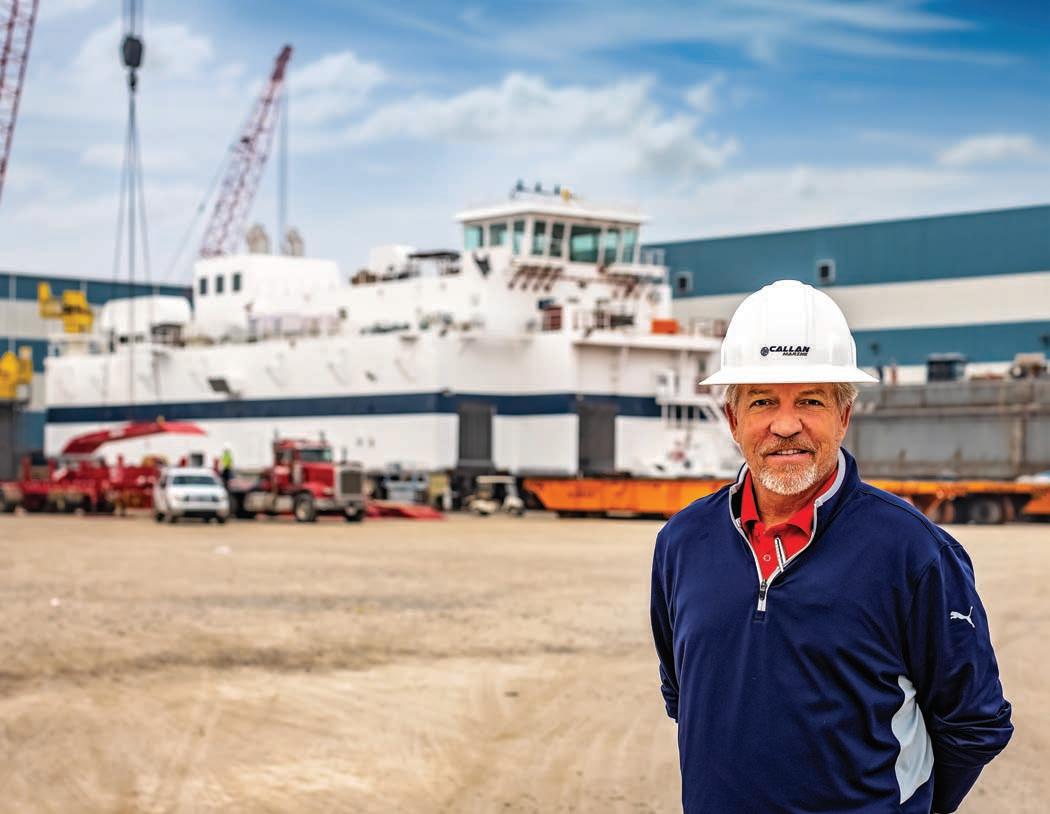
Q & A WITH
Maxie McGuire: President, Callan Marine
By Heather Ervin, Editor in Chief
Without dredging, many rivers, harbors, and ports would be impassable to towboats, cargo ships and passenger vessels. Periodic maintenance dredging and channel deepening projects are essential to accommodate these commercial vessels. And as Maxie McGuire, president of Callan Marine, a full-service dredge contractor based in Galveston, Texas, alludes to further down in this story, consumer product prices are lower when ships can transport cargoes on waterways and directly to ports and terminals.
To get more acquainted with what McGuire and Callan Marine have going on this year, we talked to McGuire, who joined the company after working for the U.S. Army Corps of Engineers in a position specifically designed for veterans. McGuire had served five years in the U.S. Air Force and served a tour in Desert Storm prior to joining the Corps.
While at the Corps, McGuire worked on civil construction projects as an inspector, where he was first introduced to dredging. Five years later, McGuire moved into the private sector as a project manager with the Bean companies. “I have progressed through the ranks to my current position with Callan Marine ever since,” he says. Here’s more …
Marine Log (ML): Why are we seeing such a surge in dredge orders in past couple of years? Maxie McGuire (MM): The market is busy and we’ve been fortunate at Callan Marine to experience a good economy in
a great market along the Texas and Louisiana coast.
ML: What percentage of your work comes from the Corps? MM: We are very diverse at Callan Marine, with both a large and small dredge fleet. Approximately 90% of our projects are private market, but a large portion of our revenue is from the Corps of
Engineers, where the large dredges perform that work. Of the private market projects, most of them involve stevedoring customers, the oil & gas sector, and various other products in the market.
ML: What factors into your selection of shipyards? MM: We lean towards experience with dredge constructors, but put a lot of stock into the schedule and the character and culture of the shipyard as successful projects are one part price and schedule and one part working relationship. If we are aligned in goals, success is the result.
ML: Any thoughts of getting into offshore wind farm work? MM: Callan Marine was founded on dredging and is heavily involved in the dredging community but has grown into a turnkey marine contractor. We know there will be dredging services needed in the offshore wind farm industry and will assess our opportunities for growth and expansion into the markets that align with our future goals.
Everything that would feed an offshore platform is buried beneath the seafloor, and dredgers would excavate trenches that would need backfilled.
ML: Finally, what’s to come in 2021 for Callan Marine? Any new projects in the works? MM: Callan Marine will be delivering our fifth fleet dredge, General Bradley (see concept drawing on the right), in Q2 or Q3 of this year. General Bradley is positioned to be a premier ship channel dredger.
It’s not quite as large and not offshore capable, but it will be perfect for navigation channels, including the Houston Ship Channel, Savannah River, the Mississippi River, and others.
The dredge is being built by Hagler Systems at the Halimar Shipyard in Morgan City, La., with the main engineering of the dredge design and supplying of key dredge components by APT Offshore BV.
The General Bradley is diesel-electric driven and will have three ABC 12DZC engines installed with a total of 9,260 hp.
“The General Bradley is a demonstration of our commitment to capital improvement projects along the Gulf Coast region. It will transcend our ‘middle market’ offering and truly be a difference-maker in large river and ship channel dredging.
A lot of channel users are familiar with dredges as they maintain the depths and widths of the waterways for all of the users. You can drive up and down the highways and see potholes on the roads that need repaired. It’s similar to the rivers.
As dredgers, we maintain waterways highways if you will. Proper depths and widths will help maximize cargo.
For the remainder of 2021, stay tuned! The excitement is not over!
WHETHER IT’S BEEN W INNING dredge contracts, building new dredgers, or promoting people within the company to reflect its growth, Callan Marine in Galveston, Texas, has been in the news frequently over the last couple of years.
Callan Marine performs dredging projects for both private and public clients by providing services to restore berthing depths for ship docks, navigation channels, or otherwise facilitate transportation in our nation’s waterways.
Last year, Callan Marine’s new cutter suction dredge General MacArthur officially entered service and received its U.S. Coast Guard certificate of inspection (COI) and ABS classification. The dredge headed straight to Texas projects and then transited to Corpus Christi for Phase II of that port’s channel deepening and widening project.
General MacArthur The General MacArthur is 290 feet long, and with its 180-foot idler barge attached, the dredge has a maximum swing radius of 530 feet.
Construction of the Jones Act dredge and the idler barge involved three Gulf Coast shipyards. The dredge itself was built at two yards. The hull and superstructure construction, housing, and assembly took place at the C&C Marine & Repair shipyard in Belle Chasse, La.
The SPI/Mobile Pulley Works shipyard in Mobile, Ala., provided the dredging equipment, including the cutter ladder, A-frame, suction and discharge pipeline, gate valves, submerged dredge pump, two onboard dredge pumps, a five- and a six-blade cutter, Christmas tree, anchor boom system and spud carrier installation. The dredge’s idler barge was built in Sterling Shipyard, Port Neches, Texas. Its spud-carriage equipment was then installed at SPI/Mobile Pulley.
While not quite as large, the General Bradley is well underway. The new 28-inch dredge that will join the fleet later this year. The General Bradley will focus on Brown Water Division projects and is suited for both maintenance and capital dredging projects.
Last month, Callan Marine promoted Micah Morris to operations manager of its Brown Water Division, where he previously served as project manager, as the company’s portfolio continues to expand. Prior to this move, one person led both the Brown and Blue Water Division.
A Look at Callan Marine
The Frederick Paup is scheduled for completion in 2023.
UNDER CONSTRUCTION:

The Largest Hopper Dredge in America
By Heather Ervin, Editor in Chief
Manson Construction Company, headquartered in Seattle, Wash., turned heads last fall when it announced that it would be building the largest self-propelled hopper dredge in the United States. The company, which builds ferry and cruise terminals, bridges, and so on, contracted with Keppel AmFELS to build the giant dredge, named the Frederick Paup, at its
Brownsville, Texas, shipyard.
When putting our bids for the construction of the dredge, Manson had discussions with around seven shipyards.
“Ultimately, we decided that Keppel
AmFELS was the best alternative for us,” says Henry Schorr, who oversees Manson’s dredging division and who has been fundamental in the design and construction process of the dredge. “We were pleased with their capability and professionalism and look forward to them delivering a superb vessel.”
At 15,000 cubic yards, the dredge— designed in collaboration with Hockema
Whalen Myers Associates Inc. (also of Seattle)—has a length of 420 feet, a breadth of 81 feet and a draft of 28.5 feet.
Schorr says that once the design package was essentially complete, Manson approached the shipyards and made the decision as to which shipyard would be utilized.
“Hockema worked closely with Manson in the overall design of the vessel, including the review and selection of the engines,” says Schorr. The group selected Wabtec engines. “After review of the current emissions regulations during the design process, it was determined that Tier IV engines would be required,” says Schorr. “Upon researching available technology and options, Manson determined that the
Wabtec engines were preferred. A large consideration in that preference was the ability to proceed without aftertreatment due to the complexities of that system.”
The dredge will be propelled by stern Z-drive units and will have two bow thrusters forward, according to Hockema.
While the dredge won’t be completed until 2023, it was able to achieve funding by a U.S. bank-led syndication. Schorr says the total cost of the vessel will be over $100 million once completed.
“As a result of Manson’s strong financial status and long history with our banking business partners, the financing was largely just another step in our normal business practices, though certainly not easy,” says Schorr. “We are very appreciative of the support that we have received from our lenders and the bonding company.”
Back in September, the dredge’s namesake, Manson’s chairman of the board, Frederick Paup, exclaimed that the dredge is the culmination of years of work by its dedicated team. “I’m honored to bear its name,” he said. “We are proud that it will be U.S. built, U.S. flagged, and U.S. crewed, and will support the U.S. Army Corps of Engineers’ mission of keeping the marine transportation highway open throughout the United States.”
Mohamed Sahlan Bin Salleh, president of Keppel AmFELS said, “We are pleased to be selected by Manson Construction to build the largest U.S. hopper dredger. It is a testament to the capabilities of our shipyard to build a wide variety of vessels for the Jones Act market. This project will be supported by our highly skilled local workforce and suppliers across the U.S. This is our first newbuild project with Manson and we look forward to supporting them as they grow their fleet of vessels.”
With a hopper capacity of 15,000 cubic yards, the dredge has a length of 420 feet, a breadth of 81 feet and a draft of 28.5 feet.
Hal Hockema, president of Hockema Whalen Myers Association sent out his congratulations to Manson and Keppel AmFELS last fall for the major hopper dredge project.
“We are gratified that Manson chose Hockema to design the Frederick Paup in conjunction with Manson’s internal engineering and operations groups,” he said. “Our longstanding relationship with Manson covers more than two decades of successful hopper dredge design and other engineering work. Complex projects like this provide an opportunity to offer our superior engineering and client relations capabilities.
“I also want to personally thank our design team at Hockema, and especially our project managers, Craig Pomeroy and Michael Minnig, for their fine work in developing this design. Our focus at Hockema is to ensure that the Frederick Paup will be a major force in the dredging market for decades to come.”
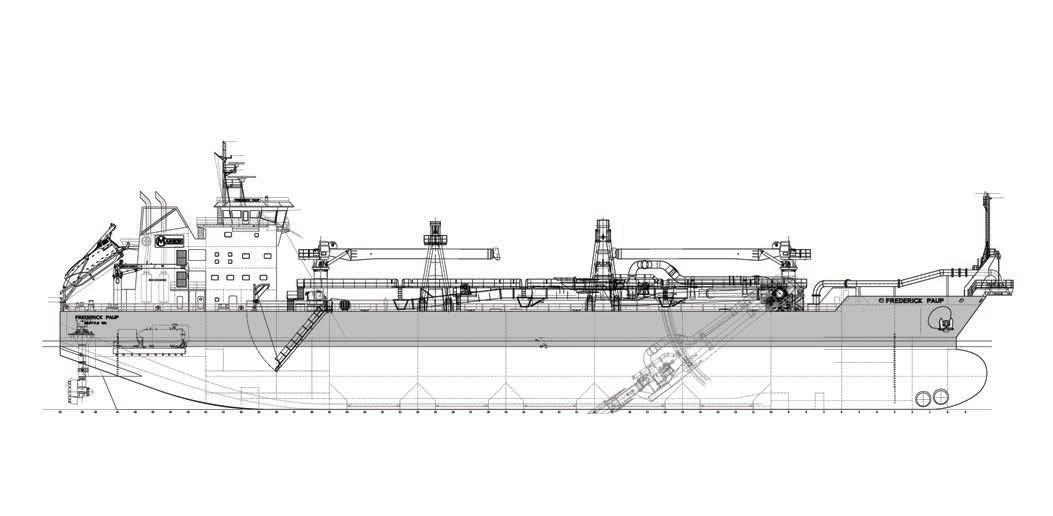

Other Projects for Manson?
Meantime, Manson Construction continues to work on its other projects and looks to new opportunities, including in offshore wind.
“Manson is always on the lookout for new opportunities,” Schorr says. “The most active of those at present appears to be offshore wind. We are continually reviewing how Manson may best approach these potential opportunities, whether it be offshore or building landadjacent staging areas.”
Just this month, for instance, Manson was awarded a $101,430,000 firm-fixedprice task order under previously awarded multiple-award construction contract for the replacement of Pier 6 at Naval Base San Diego, Calif.
The task order contains three unexercised options that, if exercised, would increase the cumulative task order value to $105,650,000. Work will be performed in San Diego and is expected to be completed by September 2023.
And in January, Manson was awarded a $9,847,000 firm-fixed-price contract for maintenance dredging in the Port of Alaska. Work will be performed in Anchorage, with an estimated completion date of January 26, 2022.
In late September 2020, Manson was awarded a cutterhead dredge contract by the Corps of Engineers for deepening of the Mississippi Valley River Ship Channel to 50 feet.
The overall project will provide a draft of 50-feet from the Port of Baton Rouge to the Gulf of Mexico—over 256 miles of the Mississippi River. In addition, the material dredged from the first 30 miles of the project near the mouth of the Mississippi River will restore an estimated 1,462 acres of critical marsh habitat.
These are only a few of the projects recently awarded to the company, which has been around since 1905 when it was established by an enterprising Swedish immigrant named Peter Manson.
According to the company, Manson’s innovation and imagination allowed him to expand the size and num ber of his floating equipment fleet as well as the number of employees. His vision allowed the company to expand its areas of operation outside of the Pacific Northwest, finding work all over North America.
In addition to its Seattle headquarters, the company has operations located in Northern and Southern California, Louisiana, and Florida.






